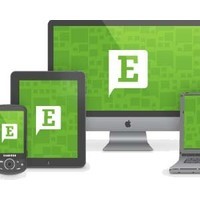

The amount of information we are expected to remember on a daily basis is increasing exponentially. Many people have increased responsibility in their roles and geographies are expanding – be it to New Zealand, Asia or elsewhere. We are constantly bombarded with information requests and it is not just our professional lives – it leaks into our personal lives as well. Yes, we can Google almost anything these days, however, often the knowledge we create is expected to be at our fingertips and the pressure to respond immediately via email is gaining momentum.
What many people fail to realise is multitasking is a myth and the ability to remember more than seven items at one time is low, for most people. So what are the options?
Well one solution is to develop a virtual memory: a digital depository of your knowledge, or your IP, that can be accessed at any time, anywhere, to make your life easier. So what are some options? There are several note-taking applications out there. You may be familiar with Onenote, omnifocus, Evernote, Reminders, Remember the milk etc. In some cases there are so many that selecting the right one is a major challenge in itself.
I will show you how I use one: Evernote. I am not sponsored and this is not a recommendation – more of a suggestion. My reasoning for using it is simple: it works for me and I have a philosophy of going with what works best, what will deliver on my needs and what will give me the best ability to invest profit back into research.
So how do I use Evernote? Every time I do an activity I ask myself a simple question: will I need this information in the future? If the answer is yes, I put it into Evernote (you can file things by taking a photo of them).
Evernote is searchable (including the text on photos), so when I create a note, I follow a simple process to increase my chances of locating information in a second. I won’t go through that in detail, however you should pick it up quickly. One piece of advice is filing protocols. If you set up your notebooks and tags following a similar process as your email folders and electronic filing (such as Dropbox) it will make searching a little easier.
Evernote provides a geographic stamp of where the note was created and allows you to type in text, take a photo, use a photo from camera roll, attach a file or embed a voice message. Try it out: it is very easy to use.
Where you might like to use Evernote:
- Idea for a business strategy that will be built on later
- Notes about a client
- Instructions on how to do things, such as change the oven clock for daylight saving
- Brainstorming for blog ideas
- Add a clipper to your web browser and you can clip websites into Evernote
- Take a photo of business cards, add text, and Evernote software is clever enough to be able to search for text in the photo to recover name in search – now that is cool.
What would you do without Google: the world’s intellectual property at your fingertips? Using Evernote you now have access to your IP. If the world is becoming more complex and you feel overwhelmed, use a virtual memory to provide space for you to be creative.


COMMENTS
SmartCompany is committed to hosting lively discussions. Help us keep the conversation useful, interesting and welcoming. We aim to publish comments quickly in the interest of promoting robust conversation, but we’re a small team and we deploy filters to protect against legal risk. Occasionally your comment may be held up while it is being reviewed, but we’re working as fast as we can to keep the conversation rolling.
The SmartCompany comment section is members-only content. Please subscribe to leave a comment.
The SmartCompany comment section is members-only content. Please login to leave a comment.